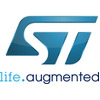Manufacturer Part Number
M27V322-100F1
Manufacturer
STMicroelectronics
Introduction
The M27V322 is a 32Mbit UV EPROM, organized as 2M x 16, deployed for non-volatile memory storage.
Product Features and Performance
Non-Volatile EPROM memory
UV erasable
Memory size of 32Mbit
Parallel memory interface for straightforward integration
Access Time of 100ns for quick data retrieval
Operates within a supply voltage range of 3V to 3.6V, suitable for various electronic systems
Through Hole Mounting Type for durable connections
Product Advantages
High storage capacity catering to extensive data requirements
Ease of data erasure via UV light allows for reuse
Suitable for applications requiring fast access to stored data
Compatibility with a broad range of operating voltages
Durable physical connection of components through Through Hole mounting
Key Technical Parameters
Memory Size: 32Mbit
Memory Organization: 2M x 16
Access Time: 100 ns
Voltage Supply: 3V ~ 3.6V
Operating Temperature: 0°C ~ 70°C
Package / Case: 42-CDIP Frit Seal with Window
Quality and Safety Features
Complies with standard safety and operational guidelines
Packaged in a reliable 42-CDIP Frit Seal with Window ensuring data protection
Compatibility
Parallel interface for compatibility with numerous systems requiring high-speed data transactions
Application Areas
Widely applicable in various fields requiring large amounts of non-volatile data storage and quick access, including industrial controls, telecommunication, data processing units, and more.
Product Lifecycle
This product is obsolete, suggesting limited availability; users might need to consider replacements or upgrades for long-term projects.
Several Key Reasons to Choose This Product
High capacity of 32Mbit catering to extensive data storage needs.
The flexibility of data erasure and reprogramming via UV light increases its reusable value.
Fast data access facilitated by a 100ns access time, crucial for time-sensitive applications.
Compatibility with a 3V to 3.6V supply voltage range offers versatility across various electrical systems.
Its obsolete status highlights the necessity for deploying in applications where the latest technology isn't a strict requirement, potentially lowering costs.



